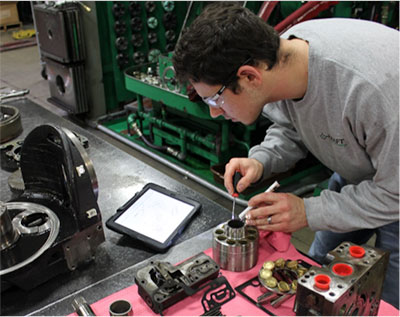 Kraft Fluid Systems—a factory authorized service center for Danfoss Power Solutions, Oerlikon Fairfield, and Schabmüller Electric Drives in North America—weighs in on four criteria users should consider when seeking a repair or rebuild of their hydraulic components.
Kraft Fluid Systems—a factory authorized service center for Danfoss Power Solutions, Oerlikon Fairfield, and Schabmüller Electric Drives in North America—weighs in on four criteria users should consider when seeking a repair or rebuild of their hydraulic components.
“A repair or rebuild performed by an authorized service center offers your equipment longer life and better performance in your application through the utilization of factory trained technicians, genuine service parts, and a renewed factory warranty,” said Merit Shambarger, Kraft service manager.
- Factory trained technicians — Service technicians should be factory trained and certified to perform quality repairs and rebuilds just like the manufacturer. “For example, the employee-owners at Kraft are extensively trained in hydraulic systems, many of which are certified hydraulic professionals,” Shambarger said “We use the latest technology to keep the repair processes up to date and efficient.”
- Genuine service parts — Select a repair shop that only sells, services, and inventories genuine manufacturer’s service parts while following factory approved rework specifications.
- Factory warranty — Most reputable repair and rebuild companies offer a warranty in keeping with the manufacturers they carry. Don’t settle for less, Shambarger said. “The typical Kraft rebuild can offer a cost savings averaging 60-70% of a new replacement and carries a 12-month warranty for Fairfield and Schabmüller product, and an 18-month warranty for all Danfoss product,” he concluded.
- Timing — Finally, repair and rebuild should compete with new unit lead time. The repair shop should stock the most commonly used service parts, allowing factory-quality component repair and rebuild to be performed in as little as two weeks.
Kraft Fluid Systems
www.kraftfluid.com
Filed Under: Mobile Hydraulic Tips